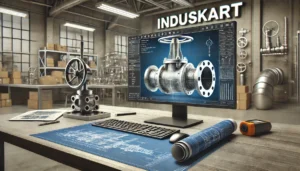In modern manufacturing, industries cannot forgo applying industrial adhesives. This makes the bonding of different materials easier and more efficient. The science behind the action of adhesive and cohesion, as well as the processes involved in the interaction of the bonders and substitutes are very complex. However, it is this complexity that increases the productivity of industrial adhesives.
Understanding Adhesion in Depth
The attraction that exists between the adhesive and the substrate material is referred to as adhesion. The two forces responsible for this attraction are mechanical and chemical bonding.
Mechanical bonding occurs when adhesive penetrates into the small pores or any other irregularities on the substrate surface. This forms an interlocking mechanism for binding the surfaces together. There is a parallel between this type of bonding and Velcro. Tiny hooks reach out and snag onto loops thereby forming a strong grip and connection.
The bonds formed through molecular interactions like the covalent bond, ionic bond or even hydrogen bonds between an adhesive and its surface is called chemical bonding. Depending on the adhesive and the materials to be bound, there are different types of chemical bonds.
Cohesion: Strength from Within in Adhesives
Cohesion pertains to the internal forces that hold the molecules of the adhesive together. A high degree of cohesion ensures that the adhesive maintains its integrity under stress, preventing it from fracturing or failing within its own structure. The balance between adhesion and cohesion is crucial; while strong adhesion secures the adhesive to the substrate, robust cohesion ensures the adhesive layer remains intact during service.
Surface Energy and Wetting
The strength of an adhesive bond is always determined by the interface surface energy of the substrate together with the ability of the adhesive to wet the surface. Wetting actually means the ability of a given adhesive to spread on the substrate and subsequently cover the largest area possible. High surface energy substrates like metals and glasses are more easily bonded by the adhesives; as a result, the bonds are stronger. On the contrary, some plastics with low surface energy may tend to require some bonding surface treatments first for better bonding.
Types of Adhesives Used Industrially and Their Application
Like other adhesives, industrial adhesives differ in groups based on their react elements and curing method. Each category serves a precise purpose that is:
- Reactive Adhesives: Adhesives that require chemical reactions to set. For example, both an epoxy adhesive and its cyanoacrylate cousin. The first is created from an epoxide resin that when mixed with a hardener set to form a rigid thermoset polymer. Cyanoacrylate adhesive, also known as super glue undergoes polymerization at an extremely high rate when in contact with moisture allowing strong bonds to be formed in seconds.
- Hot-Melt Adhesives: A class of adhesive that includes a permanently setting glue to bond objects in conjunction with heated terpolymer. These are classified as thermoplastics because they are applied while in a molten form. These are widely used for packaging and assembly since they bond quickly and are easier to apply.
- Pressure Sensitive Adhesives: Adhesives that require pressure to set. These do not require heat, moisture, or even other solvents to activate. These are commonly used in tapes and labels where a constant bond is needed and can be applied with little pressure.
Factors Affecting Adhesive Performance
Various factors influence the effectiveness of the industrial adhesives.
- Surface Preparation: Cleanliness and roughness of the surface is critical. Oils, dust, oxides, and other foreign materials can significantly impede adhesion. The bonds created by the adhesive will be far more successful following surface preparation, which includes cleaning and etching with an acid followed by abrasion.
- Environmental Conditions: Tend to perform above or below operational thresholds for temperature, humidity, and other chemical substances. Some adhesives are designed to operate under highly aggressive conditions, while others will deteriorate. When applying an adhesive, a lot of attention must be paid in order to match the service environment.
- Curing Process: Finally, the way and duration of curing will also impact the final bond strength. Curing parameters such as time, temperature, and the presence of catalysts or initiators must be kept to certain limits.
Additional Considerations When Using Adhesives
There is progress in the field of science and technology and as a result, more advanced types of adhesives are being developed. These newly updated adhesives have slightly different properties, they are more flexible, adaptable to higher temperatures, and more compatible with varying materials. In addition, environmentally friendly adhesives with less volatile organic compounds are emerging and gaining popularity due to their social responsibility.
Conclusion
Industrial adhesives are a study of the complex interactions of mechanical and chemical systems. Knowing these mechanisms helps in the selection of specific adhesives to be used for critical performance benchmarking of reliable and efficient functionality in the industry. With advancements in technology, comes better adhesives designed for challenging bonding situations.










